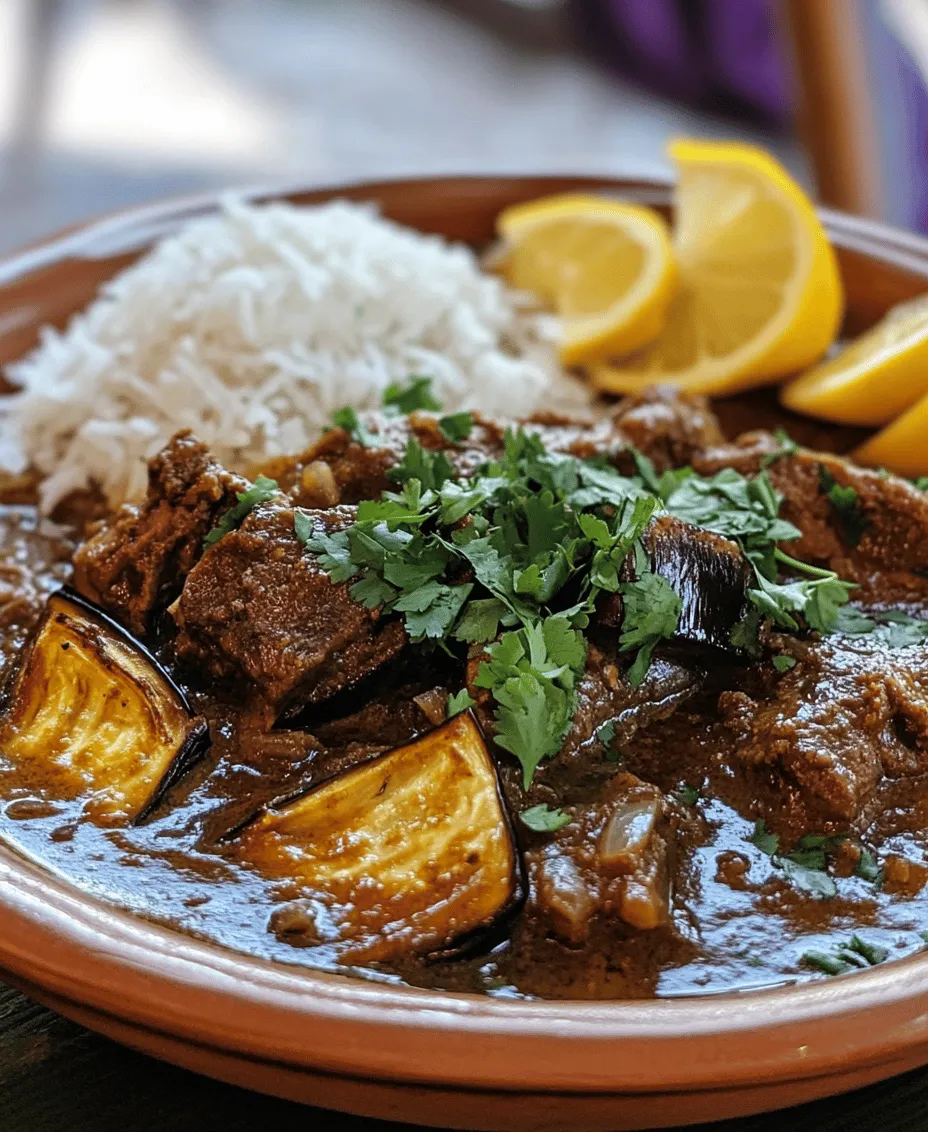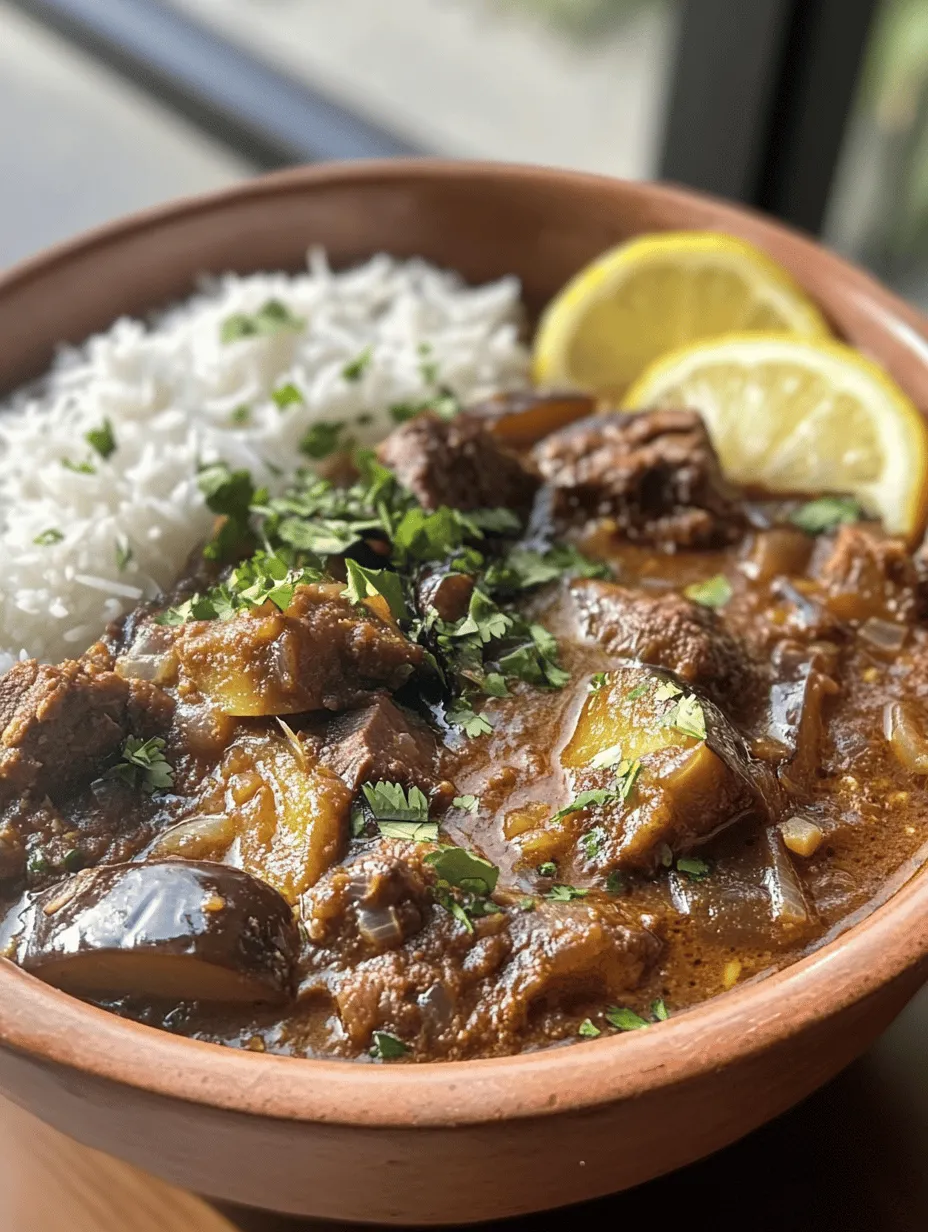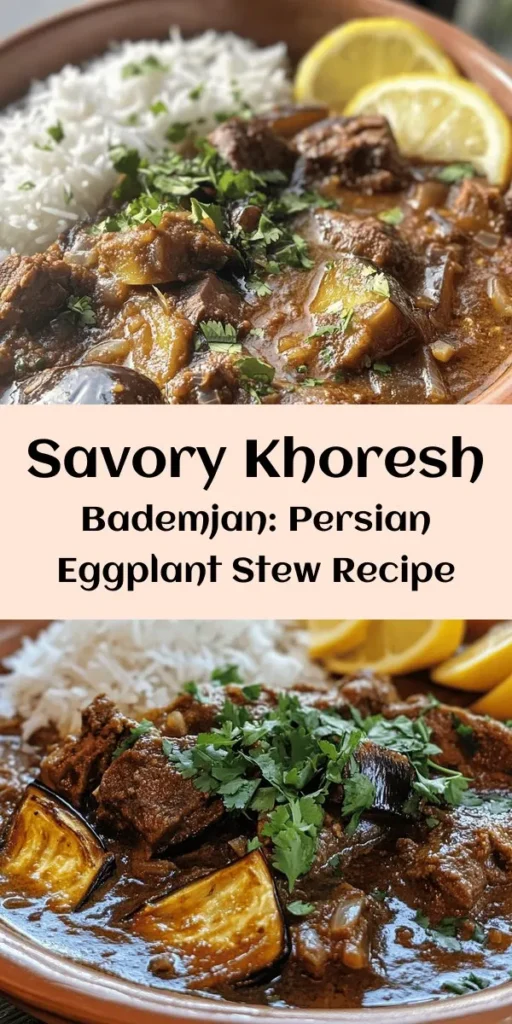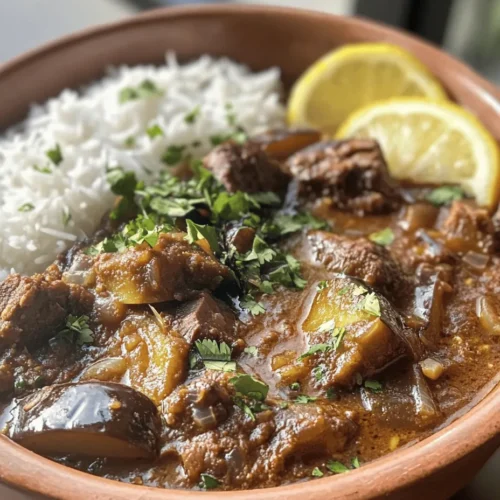Khoresh Bademjan is a quintessential dish in Persian cuisine that exemplifies the heart of Iranian home-cooked meals. This traditional stew, rich in flavor and history, marries tender meat with the sumptuous taste of eggplants, creating a dish that is not only delicious but also steeped in cultural significance. The combination of spices and fresh herbs enhances the ingredients, resulting in a comforting meal that warms both the body and soul. In this article, we will delve into the fascinating history of Khoresh Bademjan, its essential ingredients, and provide a step-by-step guide on how to prepare this aromatic stew.
The History and Cultural Significance of Khoresh Bademjan
Exploring the Origins of Khoresh Bademjan
Khoresh Bademjan, which translates to “eggplant stew,” has its roots deeply embedded in Persian culture. The origins of this dish can be traced back to the ancient Persian Empire, where the cultivation of eggplants was first recorded. The use of eggplant in Persian cooking gained traction due to its versatility and ability to absorb flavors, making it a perfect companion for stews. Over centuries, Khoresh Bademjan has evolved, but the core elements of the dish remain true to its origins—utilizing seasonal ingredients that reflect the agricultural bounty of the region.
Understanding the Role of Khoresh in Persian Cuisine
In Persian culinary tradition, “Khoresh” refers to a category of stews that are typically served with rice. Each khoresh has its unique flavor profile, often depending on the key ingredients and spices used. Khoresh Bademjan stands out among its counterparts due to the distinct taste of eggplant, which adds a silky texture and earthy flavor to the dish. Stews like Khoresh Bademjan are often reserved for special occasions and family gatherings, symbolizing hospitality and the warmth of home-cooked meals.
Cultural Traditions Associated with Serving Khoresh Bademjan
Serving Khoresh Bademjan is an event in itself. Traditionally, this stew is accompanied by saffron-infused basmati rice, which acts as a perfect canvas for the rich flavors of the khoresh. It is common for families to gather around the table, sharing stories and laughter, while enjoying this beloved dish. The act of preparing and serving Khoresh Bademjan is imbued with cultural significance, as it signifies love, care, and a connection to one’s heritage.
Ingredients and Their Importance in Khoresh Bademjan
Overview of Key Ingredients
The magic of Khoresh Bademjan lies not only in its cooking technique but also in its carefully selected ingredients. The primary components include:
– Eggplants: The star of the dish, providing a rich and creamy texture.
– Meat: Typically lamb or beef, which adds a hearty depth to the stew.
– Onions and Garlic: Essential aromatics that lay the foundation for flavor.
– Tomatoes: Fresh or canned, they provide acidity that balances the richness.
– Spices: A blend of turmeric, cinnamon, and black pepper, which define the dish’s unique taste.
– Fresh Herbs: Parsley and cilantro often serve as garnishes, bringing brightness to each bite.
The Role of Eggplants in Persian Cuisine
Eggplants are a common ingredient in Persian cooking, celebrated for their ability to absorb flavors and add a luxurious texture to dishes. In Khoresh Bademjan, eggplants are not just an accompaniment; they are integral to the dish’s identity. The process of salting and frying the eggplants before adding them to the stew is crucial, as it helps to draw out excess moisture and bitterness, resulting in a more refined flavor.
Meat Choices: Lamb vs. Beef
The choice of meat in Khoresh Bademjan can vary based on personal preference and regional variations. Lamb is often favored for its richness and tenderness, while beef provides a heartier option. Regardless of the meat selected, it is essential to choose cuts that are suitable for slow cooking, as this allows the flavors to meld beautifully over time.
Spices That Define the Flavor Profile
The spices used in Khoresh Bademjan are what truly elevate this dish. Turmeric, known for its earthy flavor and vibrant color, is a key spice that forms the base. Cinnamon adds a warm sweetness that contrasts with the savory elements, while black pepper provides a subtle heat. Together, these spices create a harmonious blend that defines the stew’s character.
The Significance of Fresh Herbs and Garnishes
Fresh herbs play a vital role in Persian cuisine, and Khoresh Bademjan is no exception. Garnishing the dish with freshly chopped parsley and cilantro not only adds a burst of color but also enhances the overall flavor profile. The brightness of the herbs balances the richness of the stew, making each bite a delightful experience.
Preparing for Success: The Importance of Ingredient Preparation
How to Properly Prepare Eggplants
To achieve the best results in Khoresh Bademjan, proper preparation of the eggplants is essential. Start by selecting firm, unblemished eggplants for the dish. Once washed, slice the eggplants into rounds or cubes, depending on your preference. To mitigate bitterness and excess moisture, sprinkle salt over the eggplant pieces and allow them to rest for about 30 minutes. This process, known as “sweating,” draws out unwanted moisture and bitterness, ensuring a more flavorful outcome.
The Science Behind Salting Eggplants
The act of salting eggplants is not just a culinary technique; it’s a science. Eggplants contain a natural compound called solanine, which can impart a bitter taste when not adequately prepared. Salting helps to draw out this bitterness, while also reducing the liquid content, allowing for a better texture when cooked. After the eggplants have sweated, rinse them under cold water to remove excess salt and pat them dry with a paper towel.
The Right Techniques for Chopping and Sautéing Onions and Garlic
Onions and garlic are foundational to the flavor base of Khoresh Bademjan. Begin by finely chopping the onions to ensure they caramelize evenly, adding a sweetness that enhances the stew. For garlic, use fresh cloves and mince them finely to release their aromatic oils. Sauté the onions in a generous amount of oil over medium heat until they turn golden brown, then add the minced garlic, cooking until fragrant. This combination will create a rich base for your stew.
Selecting and Prepping Meat for Optimal Flavor
When it comes to selecting meat for Khoresh Bademjan, choose cuts that are well-marbled, as the fat will render down during cooking, infusing the stew with flavor. If using lamb, shoulder or shank cuts are excellent choices. For beef, opt for chuck or brisket. Cut the meat into bite-sized pieces and season generously with salt and pepper before searing. This initial step is crucial, as browning the meat enhances the depth of flavor through the Maillard reaction, setting the stage for a delicious stew.
Step-by-Step Guide to Cooking Khoresh Bademjan
Searing the Eggplants: Techniques for Perfect Texture
Once the eggplants have been properly prepared, it’s time to cook them. Heat a generous amount of oil in a large pot or Dutch oven over medium-high heat. Working in batches, add the eggplant pieces to the hot oil, ensuring not to overcrowd the pan. Sear the eggplants until they are golden brown and tender, about 3-5 minutes per side. This step is crucial for developing flavor and achieving a desirable texture. Once cooked, set the eggplants aside to drain on paper towels, which will absorb any excess oil.
Cooking the Base: Sautéing Onions and Garlic
With the eggplants seared, it’s time to build the flavor base for Khoresh Bademjan. In the same pot, add more oil if needed and return the heat to medium. Add the chopped onions, stirring frequently until they become translucent and turn golden brown, which usually takes about 10 minutes. Once the onions are ready, add the minced garlic and sauté for an additional minute, allowing the garlic to become fragrant without burning. This aromatic mixture will serve as the foundation for the stew, contributing a rich depth of flavor.




